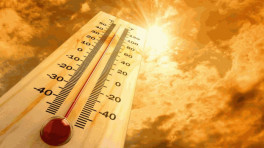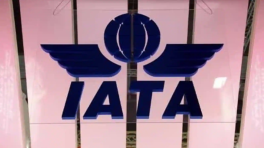More than an energy trilemma
Contrary to the nagging load-shedding the country was facing a decade ago, we are now generating surplus electricity, which is if truth be told, a double whammy for the economy as a whole

As climate change-induced disasters are taking hefty tolls and the challenges of energy security are mounting, many countries are ramping up efforts to make successful transition to sustainable and clean energy.
As of now, different forms of renewable energies, according to International Energy Agency (IEA), have a combined share of around 30 percent to the world electricity mix.
Simultaneously, over the last couple of decades, some countries have turned out to be more energy-efficient, moving towards a decoupling of economic growth from energy use.
Yet, many countries are plagued with energy trilemma, which is built on three interconnected but conflicting parameters, namely, energy equity, environmental sustainability and energy security, as designed by the World Energy Council (WEC).

For instance, increasing power generation capacity would help increase access to electricity, which is related to energy equity, but conversely, would damage the environment and climate if the energy sources are highly polluting.
Likewise, energy access might be enhanced at the expense of energy security when the energy system is more import-dependent. Balancing energy trilemma, therefore, is a complicated process.
In the Bangladesh context, ever since it took to the office, the incumbent has attained tremendous improvements, especially in terms of increasing installed capacity to the power sector that was struggling to cope with soaring demand.
To be precise, the government has increased installed capacity from 4,992 MW in 2009 to existing 20,559 MW, excluding captive generation, an increase of 4 times over 11 years.
Since there was an inadequate investment in the power sector until 2009, this government had very little choice but to add up capacity – be it from imported or local fossil fuel-based plants – to minimize crippling lead-shedding and propel the economy towards sustained growth. Access to electricity, as a result, has remarkably increased.
It is, however, a very different energy transition that has taken place and presents more than energy trilemma for Bangladesh.
According to the World Energy Trilemma Index 2019, Bangladesh has been placed at 114th position among 128 countries, falling 7 places behind compared to the same index prepared in 2018.
While Bangladesh is one of the top ten countries in terms of energy equity improvement, performance on energy security parameter has been abysmal.
The huge increase of imported LNG and liquid fuels has made the energy system more insecure.
The fuel mix of the power system is worryingly dependent on import, as depicted in the pie chart above, for instance, furnace oil (25 percent), diesel (7 percent) and imported electricity (6 percent) constitute 38 percent of the total electricity mix.
Once the contribution of LNG to power generation is added up, the share of imported fuel to the energy mix of power generation would significantly increase.
The renewable energy could have helped in improving energy security, at least to some extent. But regrettably, we are yet to yield notable benefits from renewable energy.
Until now, renewable energy represents only 3 percent of our grid and notably, out of 627 MW of electricity being generated from renewable, the hydropower that was constructed and commissioned in between the 1960s and 1980s has installed capacity of 230 MW.
Of the remaining, the majority comes from the solar home systems. The renewable energy sector has, therefore, contributed to a trifling quantity to our electricity system.
Similarly, environment-friendliness of our energy system is waning, as negative externalities are on the increasing trajectory, attributed to the overall enhancement of coal capacity to already 1,154 MW, including the latest addition of 630 MW, and the increased share of diesel and furnace fuels-based power generation to current 32 percent from less than 10 percent in 2009.
The renewable energy, which is supposed to make a green contribution to the national grid, at least partially, has thus far failed to meet the expectation.
As appears from foregoing, addressing energy trilemma – which boils down to three competing objectives of energy security, equity and environmental sustainability – is already a complicated process.
However, we are confronted with other challenges too. Contrary to the nagging load-shedding the country was facing a decade ago, we are now generating surplus electricity, which is if truth be told, a double whammy for the economy as a whole.
Firstly, there is a revenue shortfall, making it difficult for the utilities to recover the operational cost. The more problematic part is the capacity charge which is paid to the private power producers even if electricity is not being fed to the grid, attributed to less demand for electricity.
If both factors are reflected in the analysis, surplus electricity is bleeding the economy. Many industries prefer, more often than not, to rely on captive generation rather than grid electricity, an unreliable source to industries.
In some rural areas, load-shedding is still prevalent. All these contribute to surplus electricity and thereby, leading to the capacity payment of several thousand crores per annum. And worse it is, the Covid-19 has further inflicted damages upon the already wounded electricity sector.
Amid these challenges, as we move forward and once the Covid-19 pandemic is subsided, we need to improve our capacity to forecast demand for electricity more accurately in the foreseeable future as idle plants, which are now reportedly almost half of the total power generating units, don't make any economic sense.
This would help us devise power policies more accurately as nobody wants to build capacity only to switch it off.
Besides, we shall improve capacity on the distribution side to supply reliable electricity. It would help to take advantage of the comparatively large electricity consumers, the industries for example, by making grid electricity more convenient to them and thereby, discouraging fossil-based captive generation.
A specific plan is to be chalked out as to how and when the costly rental plants, which were the part of a quick-fix strategy in the power sector and played a central role in our electricity ecosystem, would be retired.
And we should work on building power plants of permanent nature instead of maintaining the expensive and temporary rental plants that are entitled to receive different fiscal benefits.
Also, it would be more prudent to look into energy security, not power security, which has been the main motivation over the last decade. Nevertheless, if we truly want to improve energy security, we have to earmark adequate resources to ramp up our gas exploration.
While the target for generating 10 percent of total electricity from renewable energy sources by 2020 is impossible to meet, we must gear up our efforts to explore the benefit of available sunlight in Bangladesh.
We have a net metering guideline available for solar rooftop projects and IDCOL has identified the electricity generation potential of 400 MW from solar, using the available rooftops of 1,500 members of the Bangladesh Textile Mills Association.
Needless to say, we have many garments and other industries, public and commercial buildings to implement rooftop solar projects. We may further look into the potential of floating solar. In parallel, we need to exploit whatever the limited renewable energy potential we have.
About the environmental aspect of the energy system, apart from exploring local gas and increasing share of renewable energy, we need to be more energy-efficient, both on supply and demand sides.
Moreover, we shall extend policy measures to influence behavioural and attitudinal changes of energy consumers to encourage adoption of energy conservation, both at individual and institutional levels.
In conclusion, as the famous saying of Einstein goes, "in the middle of difficulty lies opportunity", the exigencies of the energy sector similarly epitomize the opportunities for improvements.
We will surely be able to find answers provided that we have a clear understanding of all issues at stake and we have appropriate policy traction in that vein. However, we can't be complacent for too long and whatever solutions we choose, we need them fast.
The author is a Humboldt Scholar and a senior advisor in an International Development Agency


 Keep updated, follow The Business Standard's Google news channel
Keep updated, follow The Business Standard's Google news channel














